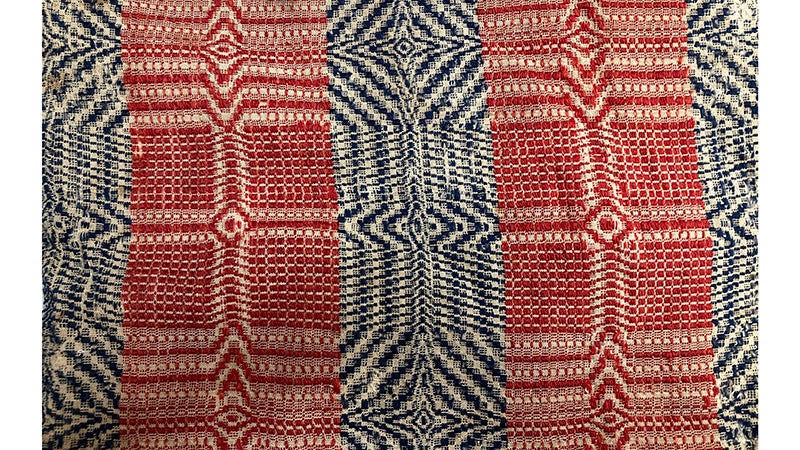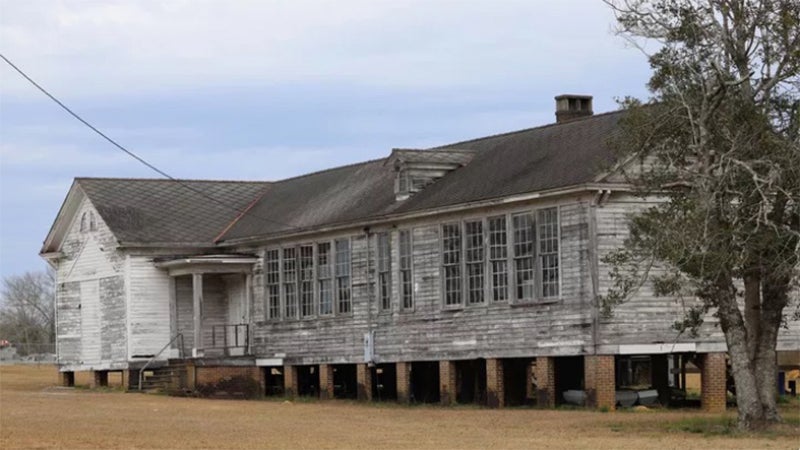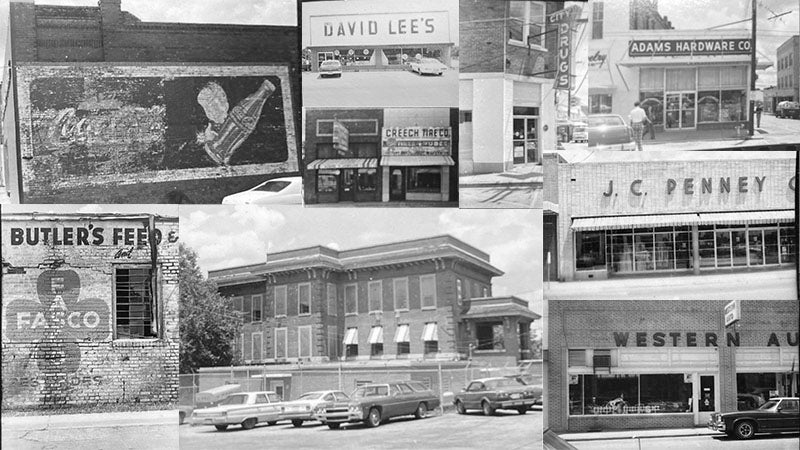Remember when: The way we were in the 20s
Published 12:08 am Saturday, May 6, 2017
“A home is not a home unless it has a piano in it!” I can still hear my maternal and paternal grandmothers saying this on many occasions. There was always someone playing the piano at my grandmother Brunson’s house after Sunday dinners and during afternoon visits. Grandmother Foye could play the piano by ear as could her daughters Carolyn (my aunt) and Marjorie (my mother). Mama took piano lessons when she was a child but her piano teacher would hit her on her knuckles with a pencil when she missed a note so that was that!
In the early 1920s, 1924 to be exact, this song was published and made popular in those “radio” days – “It Had to Be You, It had to be you, I wandered around and finally found the somebody who, Could make me be true, Could make me feel blue, And even be glad, just to be sad thinkin’ of you….For nobody else gave me a thrill. With all your faults, I love you still, It had to be you, wonderful you, It had to be you.”
Crooners through the years have recorded this hit song of the 1920s including Frank Sinatra, Harry Connick, Jr., Andy Williams, Tony Bennett, Rod Stewart, and Michael Buble. What I’d give to hear my Aunt Carolyn play that song again.
By the 1920s, twenty years after the coming of the trains, Andalusia’s population had grown to about 5,000. The new form of transportation had transformed the local economy. Picturesque homes now graced the main streets, East and South Three Notch Streets and River Falls Street. Brick buildings (business houses as they were called back then) had been constructed around the public square and on the outlying streets of downtown.
In 1889 Alabama saw its first pair of skyscrapers – if they could really be called that – with the completion of Birmingham’s Caldwell Hotel and Montgomery’s Moses Building. A dozen years passed when the Woodward Building sparked a rash of enthusiastic skyscraper construction in 1901 in Alabama’s largest city culminating in 1913 with the 20-story Jefferson County Savings Bank.
Not to be wholly outdone, Mobile and Montgomery imitated Birmingham’s passion for height by putting up skyscrapers of their own – the Van Antwerp Building in Mobile in 1907 and in Montgomery, the 12-story Bell Building. The skyscraper had become the municipal status symbol for pre-World War I America much as would the civic-center complex during the 1960s.
The skyscraper also became a prestigious format for the luxury city hotel. The Exchange Hotel in Montgomery (1906), the new Battle House in Mobile (1908), the Tutwiler and the Molton in Birmingham a few years later, and the Bankhead and the Thomas Jefferson in the 1920s all multi-storied rose in the cities.
“Even Tuscaloosa, Anniston, Huntsville, and little Andalusia, none of which could claim a population greater than 15,000 or 20,000 erected their own scaled-down versions of the big-city office or hotel tower between 1920 and 1930. The onset of the depression ended the first era of skyscraper-building in Alabama.” (The Alabama Catalog, A Guide to the Early Architecture of the State by Robert Gamble published by The University of Alabama Press)
The following history of the First National Bank Building was written by S. Daniel Shehan for an event in 1982 listing Andalusia’s first building on The National Register of Historic Places.
“The First National Bank Building, constructed in 1920 and 1921, is a beautiful and almost unaltered example of architectural style in the 1920s. Built on the southeast corner of Court Square at the corner of Coffee Street and South Cotton Street, the First National Bank Building soon became one of the area’s outstanding landmarks. Architect Frank (Tubby) Lockwood (1865-1936) designed Andalusia’s first and only building on the ‘skyscraper’ scale; and Little, Cleckler, and Company of Anniston, Alabama constructed the six-story building for $115,000. (Lockwood is the same architect that designed the Covington County Courthouse and the wings of the Alabama State Capitol.)”
“An unusual feature of the building is its size. It is 100 feet deep and only 25 feet wide – rather narrow for a six-story building. According to some who were around when the building was being constructed, the building was supposed to be twice as wide, but the owner of the adjoining land refused to sell his property. The First National Bank did not let that stop construction of the building; it simply built half the building. (The six-story building has a mezzanine and a complete basement. The exterior of the first story is covered with sandstone and is a federal style of architecture. The upper stories are covered with cream-colored brick and ornate terra cotta molding in an Italianate style architecture.)”
“The First National Bank Building is primarily important for its architecture which is enhanced by its commanding physical appearance in downtown Andalusia. However, the building also has significance as the home of some of Andalusia’s finest banks – the First National Bank, the Andalusia National Bank, and The Commercial Bank.”
“The First National Bank was established in 1901(Charter number 5970, district 6) by prominent local businessmen. It made such rapid progress as it served the business, farming, and manufacturing interests of the area that by the early part of 1922, it had constructed and occupied a beautiful six-story office building known as the First National Bank Building. In 1928, the First National Bank merged with the Andalusia National Bank under the name of Andalusia National Bank. Unfortunately, the new bank was forced to close its doors following a run in October 1932 – a victim of the Great Depression.”
“In the meantime, The Commercial Bank was founded and opened for business July 1, 1933, at another location. In 1937 The Commercial Bank purchased the First National Bank Building, reconditioned the first story, and moved in in March. Later that year, many of the offices in the building were reconditioned as well as some being added on the sixth story which had been used as a large civic room, and a second elevator was installed. In 1954 The Commercial Bank also added a beautiful clock with four faces and Westminster chimes to the northwest corner of the building.”
“The Commercial Bank grew rapidly, and by 1958, it chose to move to a larger (new) modern building on Church Street with more parking and drive-up teller windows. The First National Bank Building was then purchased by Frank Timmerman to house the Timmerman Insurance Agency. The building still housed numerous attorneys, doctors, and business offices. Gradually, however, the building’s tenants moved out until the building was completely abandoned by the end of 1972. After serving the business and professional community for some fifty years, the building seemed doomed. Most people thought its usefulness was over, but a few (visionaries) could see a great future for it.”
“In 1981, the building was purchased by (partners) William T. Kiepura (of California) and (local businessman) S. Daniel Shehan and renamed First National Bank Building (the original name). It was soon nominated as an historic landmark worthy of recognition and preservation. On August 26, 1982, the First National Bank Building was entered on The National Register of Historic Places by the United States Department of the Interior.”
“Indeed, the First National Bank Building, an attraction of South Alabama, is a part of Andalusia and Covington County’s proud past, and it shows promise of being a star in their bright future.”
A July 1976 Star News article reads, “Times were good in Andalusia when this tall building was under construction in the early 1920s. Andalusia was no longer a cross-roads town. There was industrial development, agricultural expansion, and tangible growth throughout all Covington County. Banks were playing an important role in the development of the community.”
“First National Bank had organized in Andalusia in 1901 and was located where the Martin Theatre now stands. The late T. E. Henderson was president; W. F. Simmons, vice-president; Fox Henderson, vice-president; C. D. Boan, cashier; and Dudley O’Neal, assistant cashier. Directors of the bank were Fox, J. D., and T. E. Henderson; A. C. Darling; Frank K. Feagin; and W. F. Simmons. With such capable leadership, the bank soon out grew the banking facilities and the tall building on Court Square was erected.”
I suppose there is no one still living that can Remember When the skyscraper was not part of the Court Square or the Public Square as it was referred to back then. Shehan stated that the building made of concrete and reinforced steel could survive World War III (Heaven forbid!). Lastly, to update the words of the old 1920s hit song as it relates to the familiar towering and impressive FNBB, I improvise – “For nothing else gives us a thrill, with all your problems, we love you still, it (the FNBB) has to be you!”






